Making your own homemade paint for creative play can save educators and parents a lot of money over time and as a bonus you know exactly what is going into younger children's mouths AND it washes easily off skin and out of clothes!
I love letting my kids paint and get messy, I really do think it is such an important part of their development and emerging confidence in the environment around them. What I'm not as happy with are those so-called 'washable' paints (is it just my kids' clothes they never wash out of?) and some of the ingredients they list on the side panel!
When I first began working in child care (lets say MANY years ago and leave it at that as I refuse to admit I have hit the 40s!) we made all our paint and paste and used powder dyes to colour. Acrylic paint had to be reserved for special projects and we very rarely used it.
When I initially began sharing activities here on the blog that used the cornflour paint as a base I was surprised to realise that it was pretty much unheard of ! What a shame, it is so easy to make your own paint base at home and it can be used for so many things without costing you much at all.
If you have a toddler or preschooler you will know that they use A LOT of paint and paste when they get into the messy zone. If you know the paint costs next to nothing and is non-toxic if they happen to do a quick taste test, then it makes the whole process a lot more fun.
Think making your own sounds great but would probably be to much effort? Then allow me to show you just how quick and easy it really is!
Here's What You Need...
Here's What You Do...
In a large bowl put 4 heaped tablespoons of cornflour.
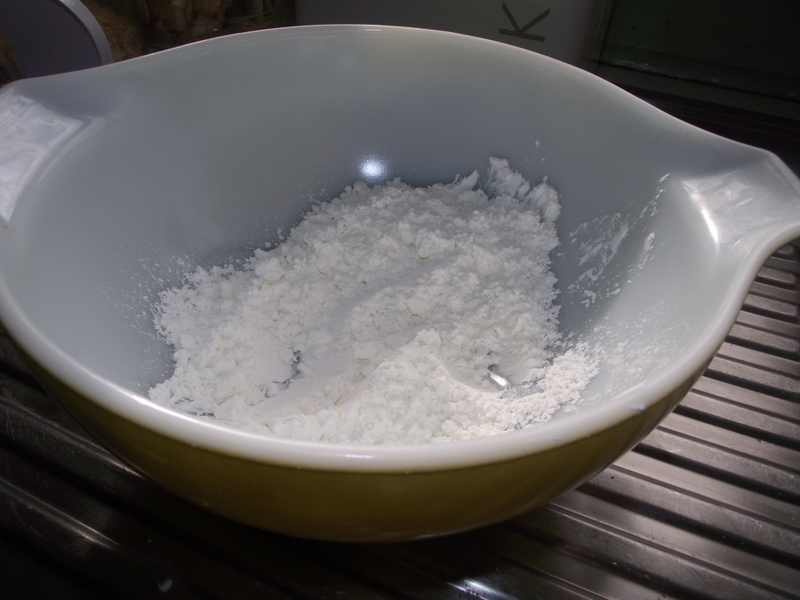
Use a little water from the tap to mix to a smoothish paste (like making custard or white sauce)

Take your kettle of boiled water and slowly pour it into the bowl whisking briskly as you do. You need to move quickly as it will thicken as you pour in the water.
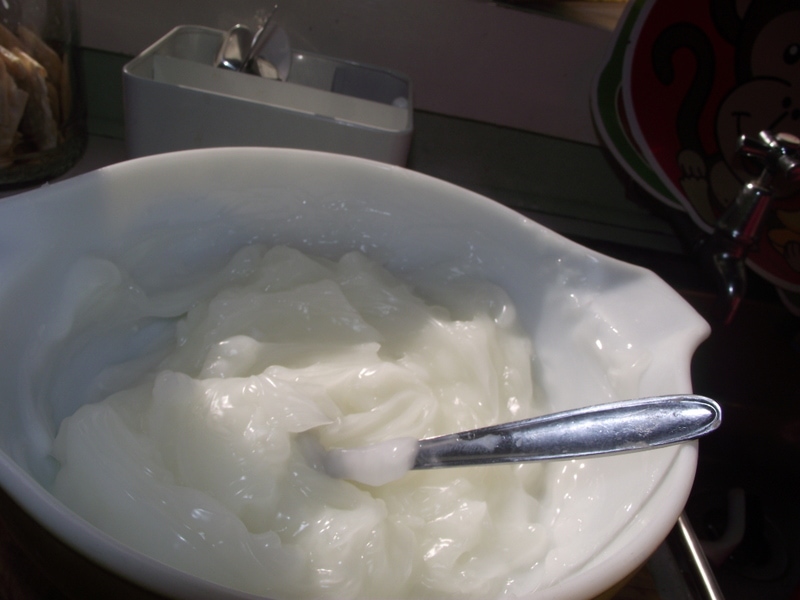
Decide the texture you want. I like it a little runnier for easel painting and craft but thicker for finger painting-type activities. By adding more or less water you can reach the texture you prefer. Now you have your paint base.
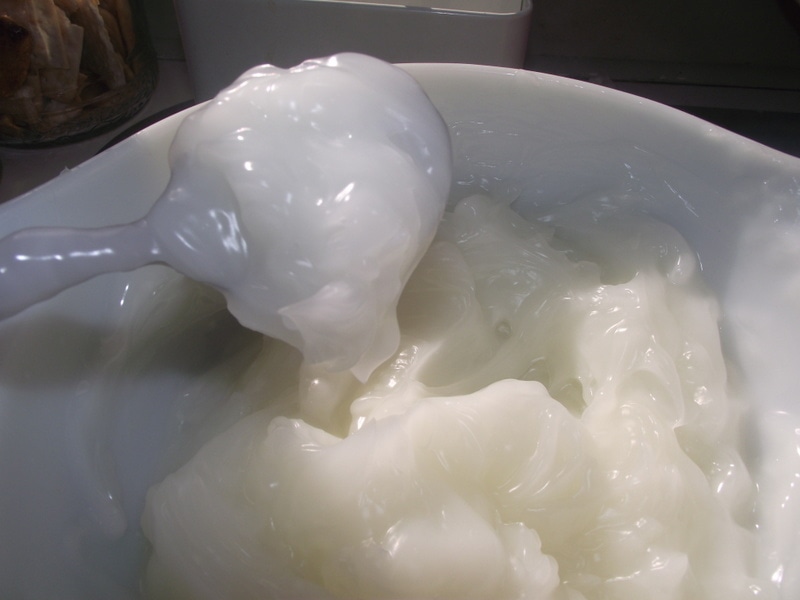
If you want to use it as a paste just leave it white. If you want to colour your paint add a little sprinkle of edicol dye or food colouring - the kids will love to help with this part.
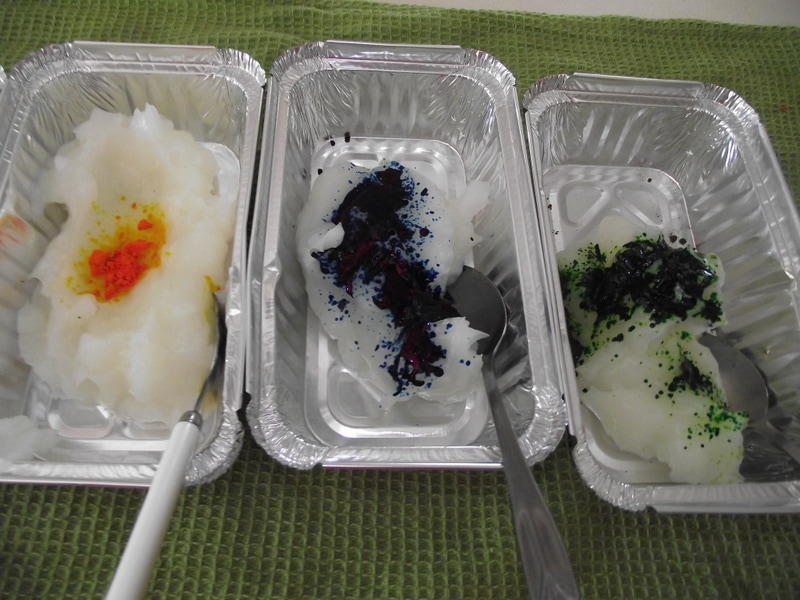
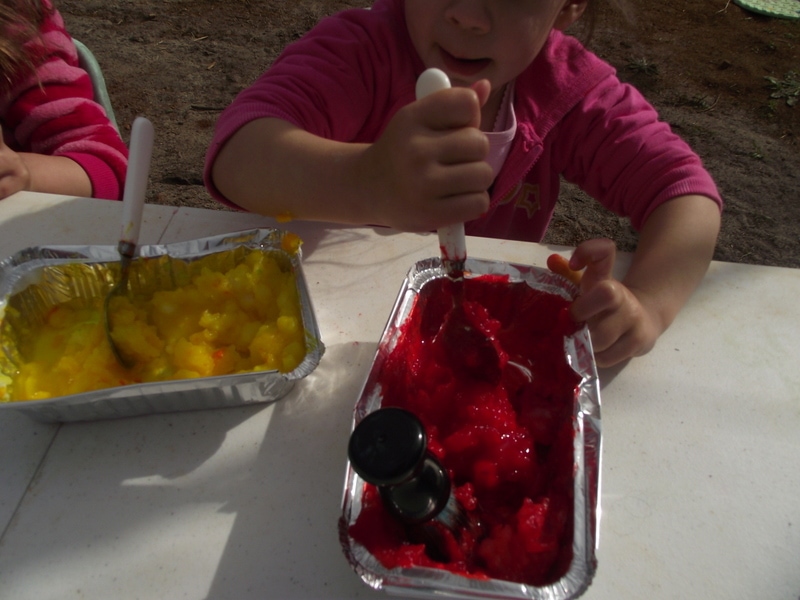
My girls always like to help clean up when we make paint and whisking bubbles in the sink is not only fun but excellent for developing fine motor skills.

When dry the paint looks like any other paint on paper but sometimes after a few weeks it can become flaky if used on cardboard or hard surfaces. I've never really had any problem though and it has certainly saved me a lot of stress and money over the years!
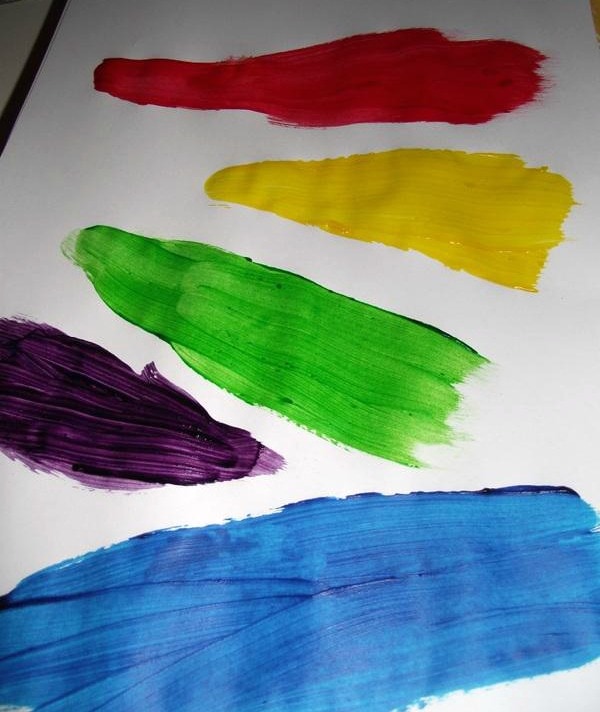
Now get ready to play.....

How to Store Your Homemade Paint
This cornflour paint will keep for up to a week before it begins to get smelly but you must store it in the fridge. It will thicken and become jelly like when refrigerated but you just add a little warm water and give it a good mix before you need to use it each day.
I like to make up a large batch of white paste and store in a plastic container with lid (ice cream containers are the perfect size). Then I just scoop out however much I need into the paint pot or similar each day -add a sprinkle of colour, stir and good to go!
If you use happen to use baby food in jars at home or work make sure to recycle and save for your paint as they are a fantastic size and don't take up much room in the fridge.

Play Ideas Using Homemade Paint
Add some tools....
Why not add a few little tools to extend their play and creativity? We love using shaving brushes here as they are so easy for little hands to hold and move around.

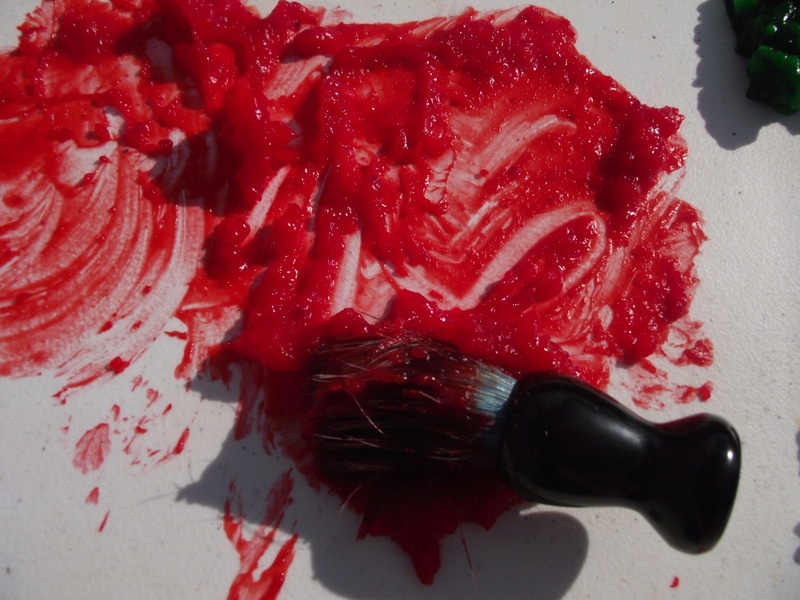
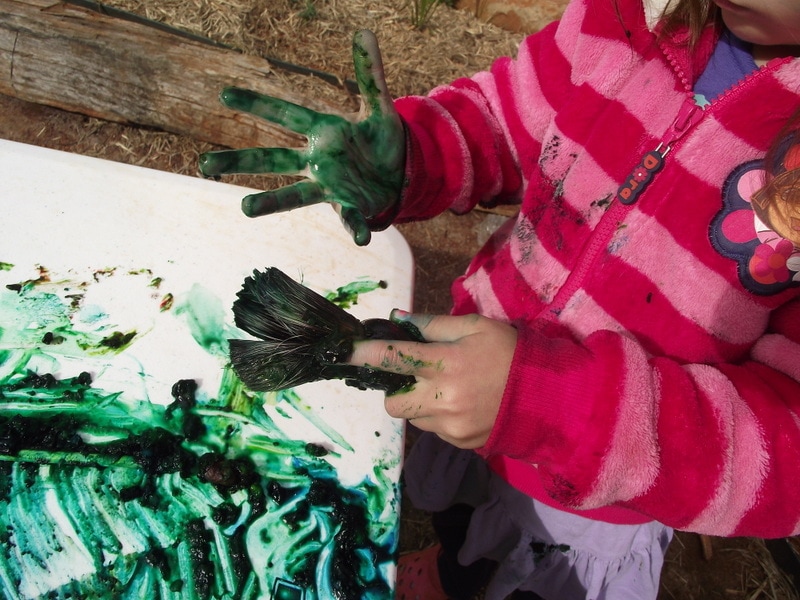
Sticks are lots of fun for making patterns in the paint and older kids love to write their name and make a masterpiece or two. You can use craft sticks from the collage trolley or simply collect some sticks from around the yard!
As you can see this batch was rather lumpy but it just provided more opportunity to explore with the senses and was perfect for fingerpainting and sticks!

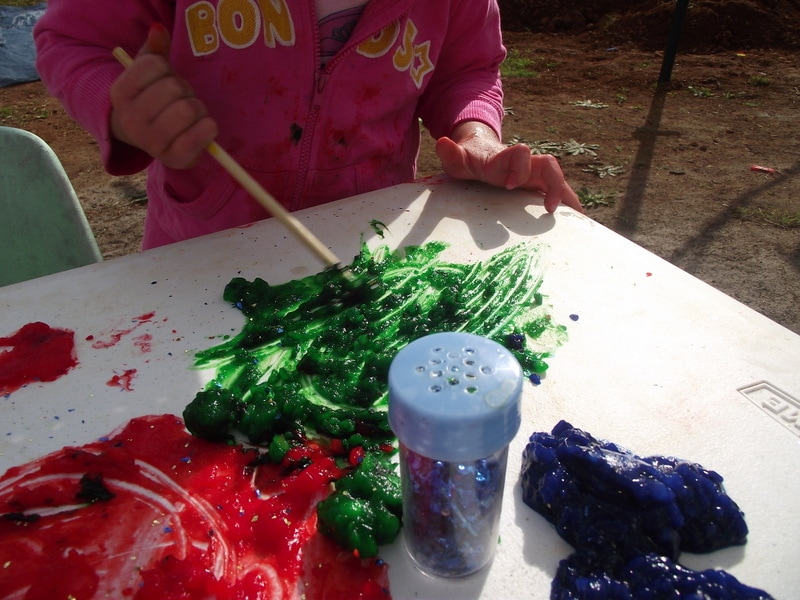
Play with it warm...
Warm cornflour paint is a lovely sensory experience and even I enjoy squelching it through my fingers if given the chance! Spoon your colours out onto a table (I would suggest outside!) for some finger painting fun
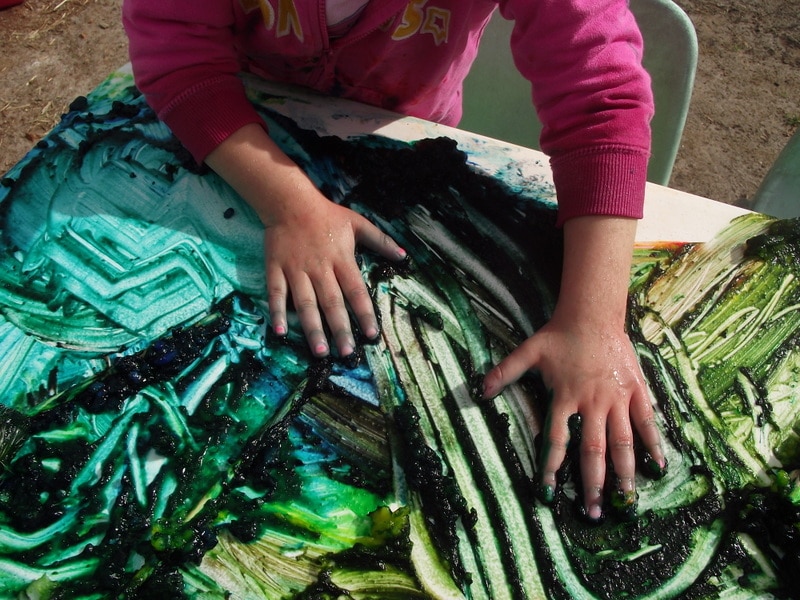

When they have finished their artwork on the table why not help them make a print to keep? It’s so easy. Simply lay some paper over the top of the table, get them to press down and make some hand prints then peel back for a masterpiece!

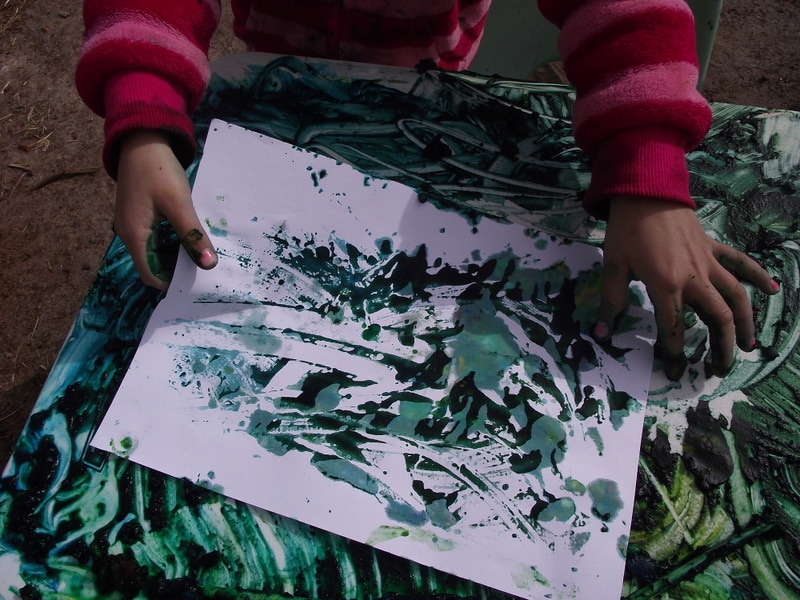
Such a joy on a cold Winter’s morning…..warm cornflour paint to squish and ooze through little fingers…letting them mix the colour dye through the paint gives the activity an added element of excitement and discovery!
Explore big and small...
Use brushes and cornflour paint to explore the simple concepts of big and small in this activity perfect for toddlers and little hands!

Use in cooking & role play activities...
Add muffin tins, bowls, spoons and other baking essentials from the kitchen, add a sprinkle of colour here and there then stand back and watch the cornflour paste baking begin! An excellent sensory activity that also offers opportunities to explore colour mixing and role play.

Explore texture with sponges...
Grab a tray, your cornflour paint and some homemade painting sponges with different textures and sizes to invite lots of hands on sensory play - all ages will enjoy this one!
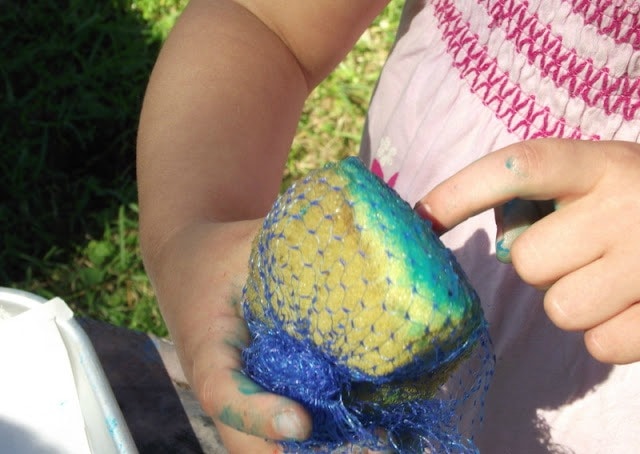
Stamp with nature...
Add a little thinned cornflour paint (just use more water) to empty takeaway food trays with a damp kitchen sponge and then see what you can find in your backyard that would make interesting sensory stampers - see how we used seed pods to stamp with here.

Experiment with colour mixing & squeezing...
Add your base cornflour paste to trays then watch as the children use squeeze bottles with water colours to mix, investigate and create in this simple activity.
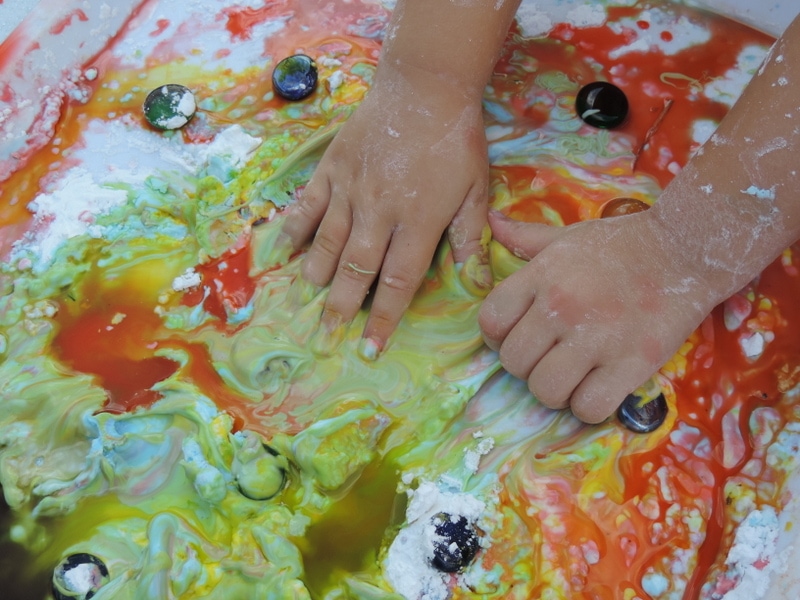
As with any creative and messy play experiences outdoors I always like to keep a tub or bucket of water close by so that the children can come back and forth to wash hands and allow them a sense of independence and control over how messy they want to be. Some children need to wash their hands often during sensory play and others not so much.
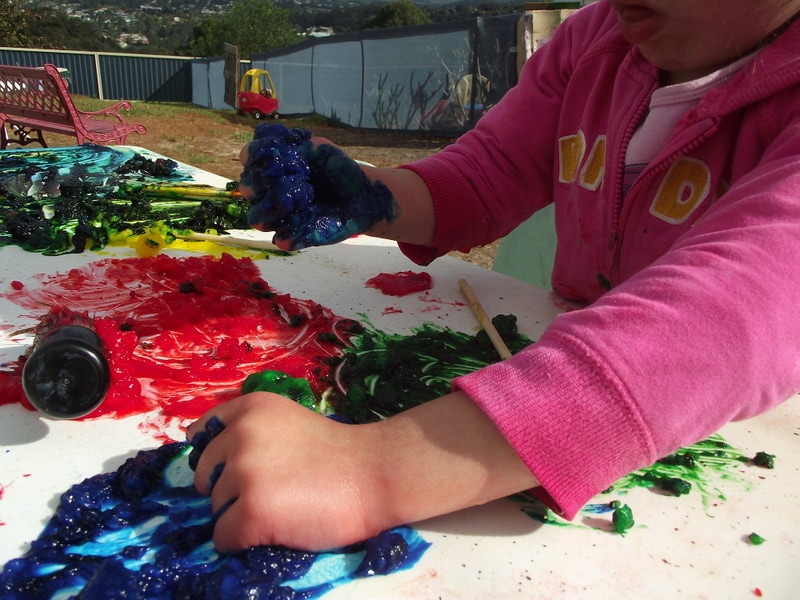

I hope I have convinced you to give making your own homemade paint a try . I promise you will feel a sense of achievement and a whole lot less stress when you watch the children experiment and create with something you have made and know will wash out easily!
Especially useful for those moments when you return from the shops and realise you have colourful handprints on your behind (please say it's not just me that has those moments!!).

Have you made your own paint before? I'd love to hear how you have used it or perhaps you'd like to share some inspiration and photos with us in The Empowered Educator Facebook Community with other early childhood professionals from all across the world!
A Little About Me

Jodie Clarke is an early childhood professional supporting educators who want and need to stay passionate about the work they do! She has 30 years hands-on experience in the early childhood and human services sectors across many different roles.
Jodie is mum to 3 in Australia and has already helped thousands of educators with their work through her popular blog posts, activity ideas, online training and e-books.


I am always on the look out for DIY’s. I love natural and this is certainly a great guide for washable paint that is safe to use. Thanks, Jode!
Wow how simple is that I’m definitely going to make this….
Thanks a million jodie…
My pleasure Marcia – I hope it works well for you (and saves you money!!)
This is how we were taught to make paint/paste when I went to Teachers College – used to make it every week at my Child care Centre, everyone did, as it was so much cheaper & more versatile than using ready made paint (acrylic). That was about 40 years ago …Acrylic paint got a bit cheaper & staff were too busy to spend time making it (& persuading the Cook to leave space in the fridge 🙂 ) As a relief I still sometimes make a batch & take it with me to give the kids something different to use. Thank you for re-introducing it to a new generation
This is such a craft fun project to make the paint and then they can do art projects with it. Very cool!
Can I use all purpose flour for this instead of cornflour?
Not really Destiny as all purpose flour won’t thicken it as well but it will still make a paste you can paint with if that’s all you have – cornflour is also called cornstarch if that helps
This was the way we survived in the past! Acrylic child safe paint was a luxury and expensive!
Used this too for collage. Often add a little PVA glue to enable children to collage cellophane, paper etc onto their paintings The PVA provides strength to glue to adhere more than paper and is great for box collage etc.
Also much cheaper glue than straight PVA or clag types of glue.